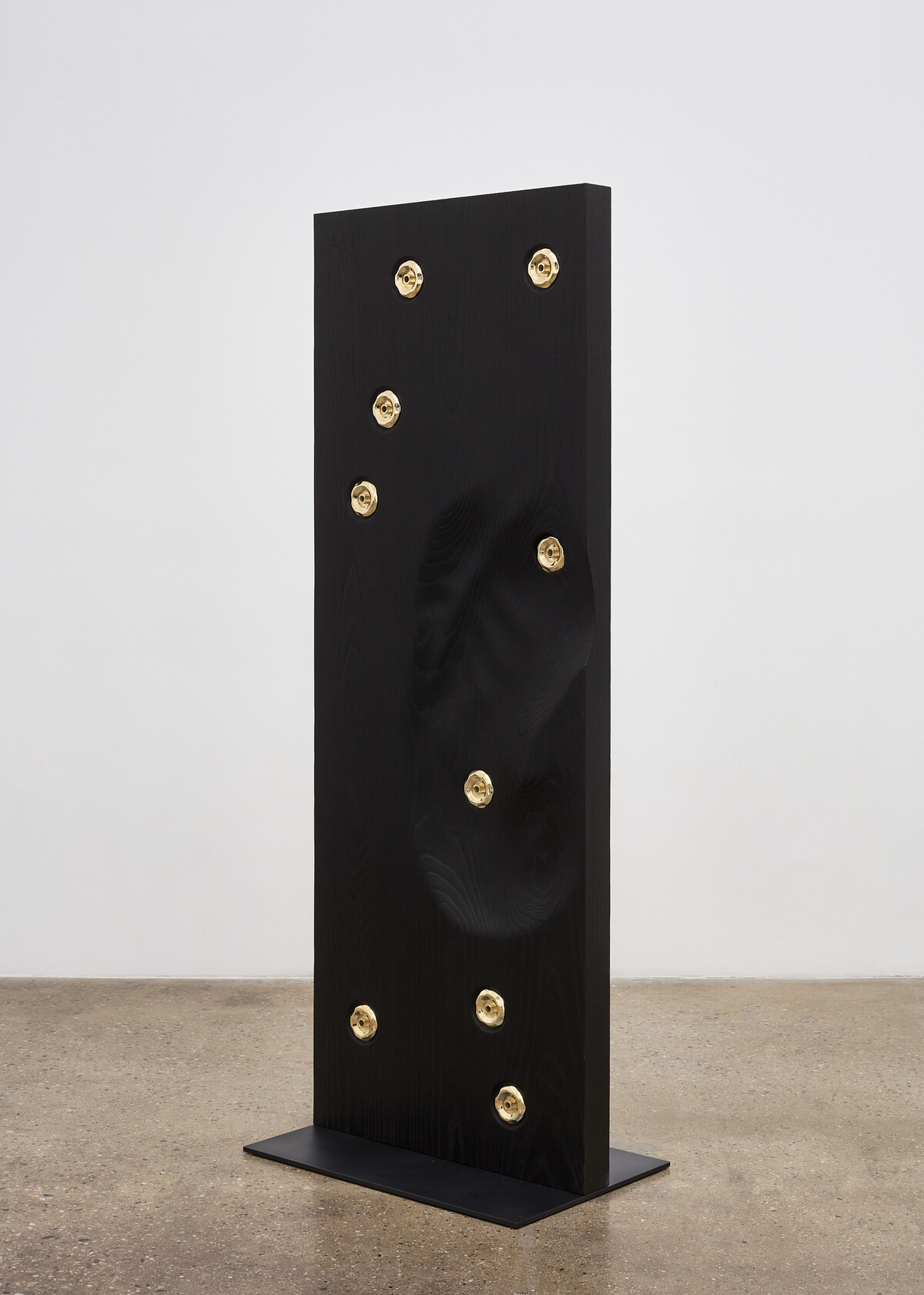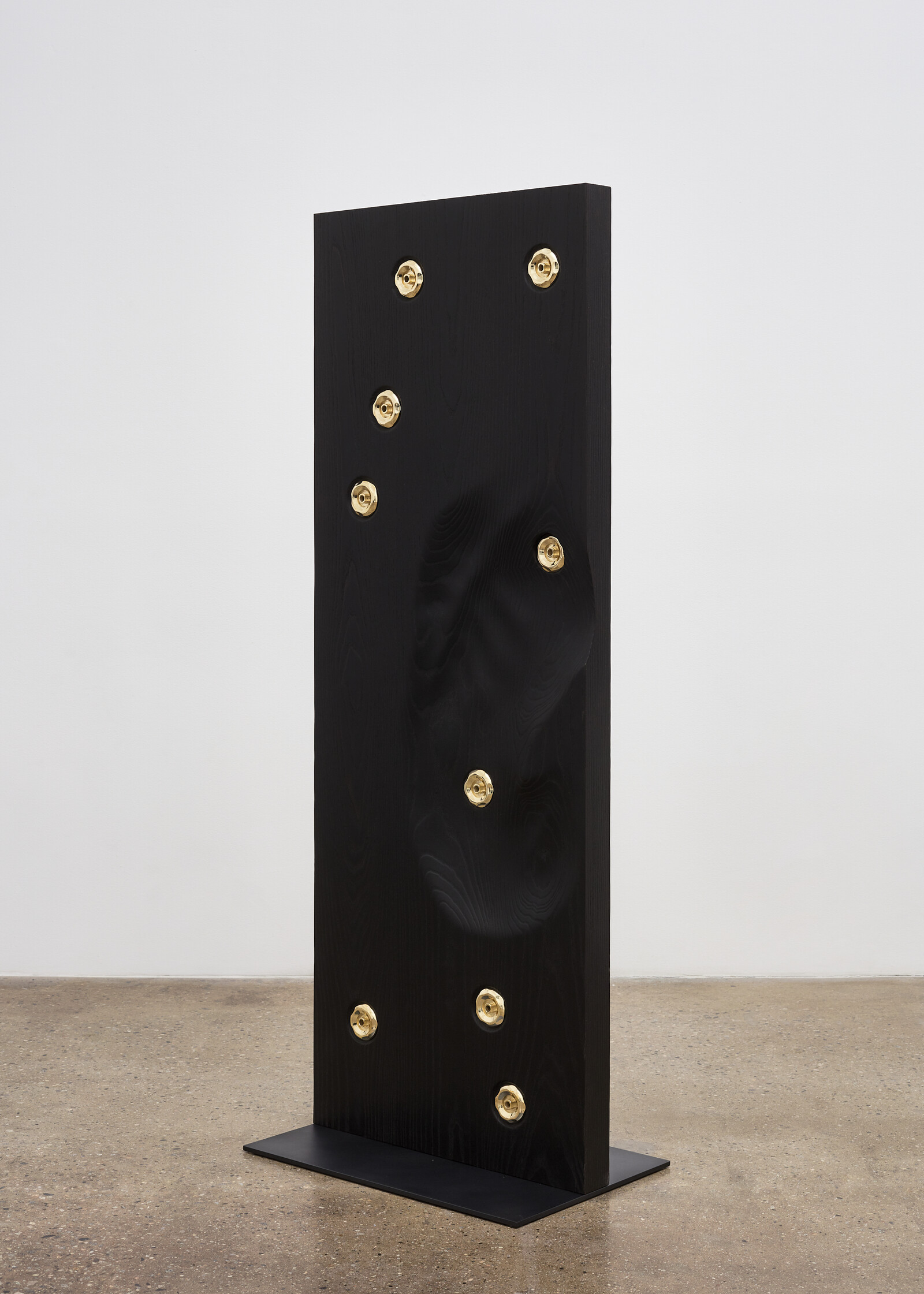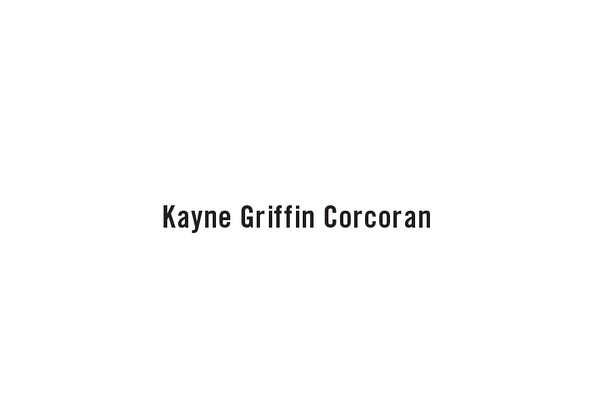PSYCHO GRAPHICS
November 16, 2019–January 11, 2020
1201 S. La Brea Ave
Los Angeles, CA 90019
United States
Hours: Tuesday–Saturday 10am–6pm
T +1 310 586 6886
info@kaynegriffincorcoran.com
Kayne Griffin Corcoran is pleased to announce PSYCHO GRAPHICS, a solo exhibition by Mika Tajima. The exhibition connects material transformation to the shape of an uncontainable future that exceeds our current bodily and psychic experience of power. The works on view manifest Tajima’s continued investigation into the production and transmutation of matter, energy, and the human psyche.
The title is a verbal play on the term psychographics, which is a data research method that renders human subjects as political or economic targets by modeling their inner subjective psychology and predicting individual beliefs, attitudes, and values. In this exhibition, the ‘material’ of the psyche is considered and subject to transformation in relation to the material world—from psychic abstraction to language to concrete object to image.
In PSYCHO GRAPHICS, matter is burned, misted, formed, captured, encased, projected, processed, and quantified.
The large-scale animation installation Human Synth (Los Angeles) (2019) uses extractive technology that mines the current sentiment of a population in real time—in this case analyzing affective data from social media in Los Angeles to predict future human expressions. These algorithmic predictions employ natural language processing and sentiment analysis to forecast collective social feelings, which are then made visible in the form, shape, hue, and speed of digital smoke. For this exhibition, Tajima has also developed custom incense that will be present as a counterpoint to the digital smoke of Human Synth; this incense will be sensed but invisible, an ephemeral material foil and linguistic parallel to the visible data-generated smoke.
Pranayama (Monolith, D, shou sugi ban) (2019), a new monolith in Tajima’s Pranayama series, is made using Japanese shou sugi ban technique originating in the 18th century, which involves methodically charring wood as a way to preserve it against the natural elements. What appears to be the impression of a human figure marks the surface of the formally structured work. Implying an opposing force to the body, chromed jet nozzles embedded deeply in the blackened wood connote release and the potential for output and flow.
Also on view are multiple Art d’Ameublement works, large vivid spectrums of atomized particles encased in transparent shells of thermoformed PETG. Unlike traditional paintings in which pigments adhere to the recto of the support, these objects are painted from the interior in color transitioning gradients. The titling of the works animates this tension as well: each painting’s subtitle names a remote geographic location (Nukutoa, Bayo Alcone, Iles des Sables) so that the distance evoked by the title of each work is at odds with its real time encounter with the viewer.
Tajima’s recent engagement with glass in her work draws on its liminal status as a material that exists between liquid and solid form, and its relationship with silicon—a chemical element crucial to microchips. Scaled to the human torso, the new work Mirror consists of mold-blown glass encased in a black rubber solid coating. Tonally and materially, the otherworldly grouping invokes a range of associations including orthotic devices, fetish objects, bodily contortion, and alien forms.
For the exhibition, Tajima has created limited edition t-shirts and poster ephemera by art director and designer Hassan Rahim. Linking to the idea of invisible energy throughout and within, the graphics of the shirt shift in color and visibility from the heat of the wearer. Each are available for sale directly through the gallery.
Mika Tajima was born in Los Angeles, CA and lives and works in New York, NY. She holds a BA from Bryn Mawr College, PA, and an MFA from Columbia University, NY. In Fall 2019, Tajima unveiled new works included in the Okayama Summit 2019 curated by Pierre Huyghe. Public collections include Whitney Museum of American Art, NY; San Francisco Museum of Modern Art, San Francisco, CA; Dallas Museum of Art, Dallas, TX; Albright-Knox Art Gallery, Buffalo, NY; Hammer Museum, Los Angeles, CA; Hirshhorn Museum and Sculpture Garden, Washington, D.C.




